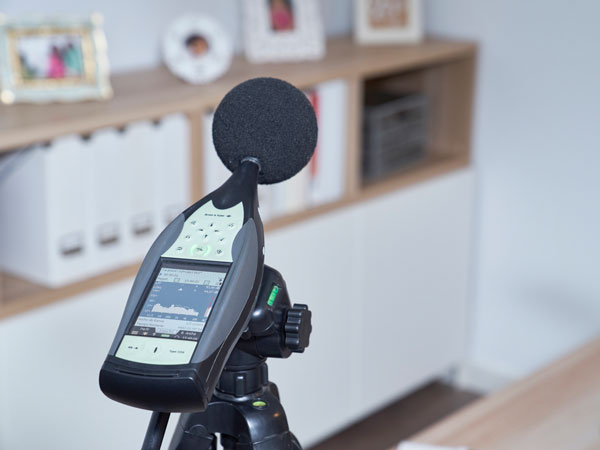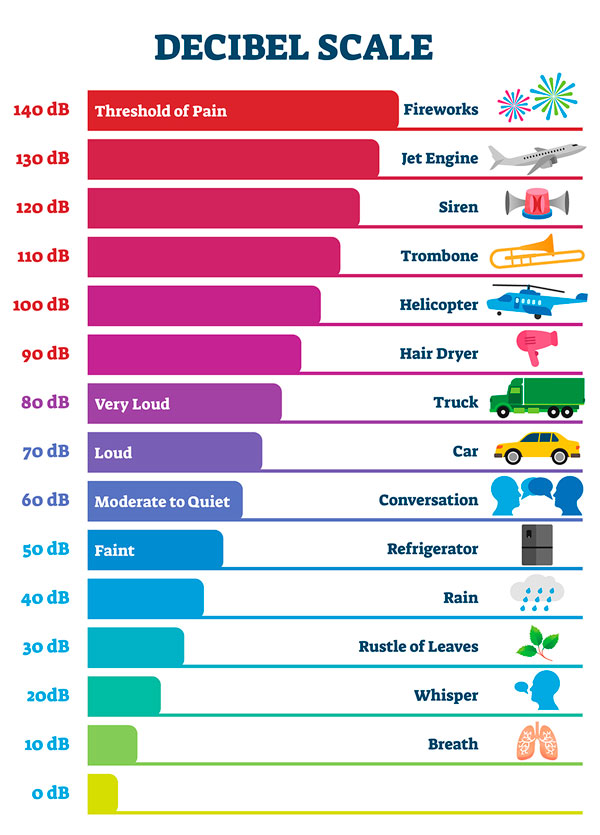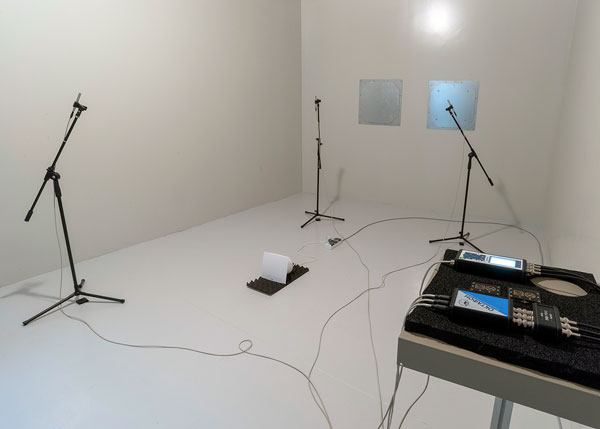Noise of a domestic fan: how to evaluate it?
Noise is an inevitable companion of any device that contains a motor and moving parts. It especially draws our attention in places where we seek peace and relaxation – in our homes and apartments. An exhaust fan also operates with minimal sound level, which is specified in the device’s user manual and sometimes on the packaging. In the following, we will explain how to correctly interpret the sound level of an exhaust fan and avoid misunderstandings when conducting your own sound level measurements.
It is well known that noise is a set of extraneous sounds that adversely affect the human body. Noise levels can be measured by appropriate devices, such as sound level meters. Such devices, thanks to their built-in microphones, enable you to capture the pressure of sound vibrations, convert it into electrical signals measured in volts, and display the final data in decibels (dB) and acoustic decibels (dBA).
Sadly, only some have sound level meters. But almost everyone has a smartphone, which can also be used as a noise level meter. To do this, it is enough to install a special smartphone app, the range of which is quite wide. By measuring the noise level of a running fan with a smartphone, the user receives data in decibels. Then, comparing the data obtained with the data indicated on the device packaging and the user’s manual, the user may notice a significant discrepancy, which will probably surprise them and make them suspicious. What are the reasons?
Reason one: different decibels
We mentioned decibels and A-weighted decibels above. Typically, smartphone apps provide data in dB, whereas ventilation equipment manufacturers provide data in dBA in their user’s manuals and packaging, which can be significantly lower than the former. Where do these acoustic decibels come from?
A sound level meter measures the sound pressure level at a specific point in space. So, does it measure the noise level? Not quite so. The volume of sound and, consequently, the noise level perceived by a person are subjective and depend on the peculiarities of the person’s auditory perception. For them, loudness depends not only on the intensity of the sound, but also on the frequency of sound vibrations, spectral composition, timbre, spatial location, the duration of sound exposure, and even the time of day (low sounds that do not disturb at all in the daytime may be perceived as unfavorable noise at night). For example, the human ears have different sensitivity to sounds of different frequencies: they are more sensitive to sound vibrations at medium frequencies (1000–3000 Hz), and as the frequency of vibrations drops or rises, the sensitivity decreases. An especially sharp drop in sensitivity is noticeable in the lowest and highest frequency ranges. Therefore, sounds of the same intensity but different frequencies are perceived as sounds of different volumes. In order to bring the results of objective noise measurements closer to the subjective perception of a person, the sound pressure level is corrected at different frequencies. Such changes are standardized internationally and are known as A-weighting. The weighted sound pressure levels are measured in dBA – A-weighted decibels.
Thus, noise indicators of the same intensity, expressed in dB and dBA, can differ significantly. In order to correctly assess the noise level of a running fan and determine the degree of its compliance with the data stated in the user’s manual and packaging, it is necessary to convert the results in decibels obtained with a smartphone or sound level meter to acoustic decibels using A-weighting.
Reason two: different noise measurement conditions
If you have a sound level meter app installed on your smartphone, it seems easy to measure the noise level of a running ventilation device: you open the app, bring the phone closer to the noise source, and the data immediately appears on the screen. This is probably how most users see it. And this is a big mistake.
Manufacturers of ventilation equipment do not use smartphones when measuring noise levels. The existing regulations oblige them to test their products in accordance with international ISO standards. This is done in order to ensure that all technical parameters declared by different manufacturers are obtained under the same conditions, which would exclude the influence of any subjective factors, and the consumer has the opportunity to compare the characteristics of different devices of the same type. The conditions for testing equipment noise are also regulated by international standards.
Such tests involve measurements in a certified laboratory in a special echo-free chamber that is soundproof and excludes background noise and sound wave reflection from various objects. A certified sound level meter is used as a measurement tool. This device measures the noise level at the inlet and outlet of the fan, as well as at a certain distance from it – at zero (at the fan itself), at a distance of 1 and 3 meters, sometimes 10 meters or more. The final data is corrected (A-weighted), and then included in the equipment noise performance datasheets.
Meanwhile, smartphones and conventional sound level meters that anyone can use measure the noise of a ventilation device without taking into account the nuances described above, so these results cannot be considered objective. For example, in any room there is always some background noise, as well as walls, ceiling, and various objects that repeatedly reflect sounds. As a result, sound level meters respond to the overall sound fluctuations and it’s not the device’s noise level that the user receives, but the degree of noise in a particular place. The distance to the device at the time of measurement is also important, because at different distances from the object, the sound intensity is different. If the user measures the noise level of a fan at a distance of 20 cm and then compares the data obtained with the parameters specified in the data sheet or on the package at a standard distance of 1 and 3 m, they will be surprised and somewhat disappointed, because the measured values will most certainly exceed those stated by the manufacturer. Furthermore, the difference between these values will be even greater if they do not convert their readings from decibels to A-weighted decibels.
If sound level meters and smartphones with corresponding smartphone apps fail to provide the correct result for a particular technical device, then is there any point in using them? By and large, these devices and apps were created as tools for measuring noise levels at a specific point in space. However, they can still be used to measure the noise level of various products. For example, they can be used to compare the total noise of two or more devices under the same conditions (here and now). In this case, the sound level meter and smartphone will clearly show which device is quieter or louder. This is a very useful feature when choosing and testing any noisy equipment. However, it is not appropriate to compare the readings of sound level meters with laboratory measurements.
REFERENCE
Sound power refers to the amount of energy transmitted by a sound source per unit of time. It is measured in watts (W). Since the power of a sound source can vary widely, it is common to use a logarithmic scale of sound power levels for convenience, and to record the values in decibels (dB) and acoustic decibels (dBA). The sound power level does not depend on the location of the equipment, ambient conditions, or distance from the measurement point.
Sound intensity characterizes the amount of energy transferred by a sound wave through a unit area perpendicular to the direction of wave propagation per unit of time. It is measured in watts per square meter (W/m2).
Sound pressure. Sound vibrations are fluctuations in air pressure at different frequencies that are perceived as sound by the human hearing organs. At each point in space, sound waves create a certain pressure, which is measured in pascals (Pa). The value of sound pressure depends on the acoustic properties of the environment, the ability of the room to reflect sound, and the distance from the sound source. Since the range of sound pressure is also very wide (from the hearing threshold of 2×10-5 Pa to 20 Pa), the logarithmic scale of sound pressure levels is used in calculations, and the values are recorded in the dB and dBA units.
Sound volume is a subjective value of auditory sensation, which depends on the sound intensity and its frequency. At a constant frequency, the sound volume grows with increasing intensity. At constant intensity, sounds in the frequency range of 700–6000 Hz have the highest volume. Zero sound volume level corresponds to a sound pressure of 2×10-5 Pa and a sound intensity of 10-12 W/m2 at a frequency of 1 kHz.







